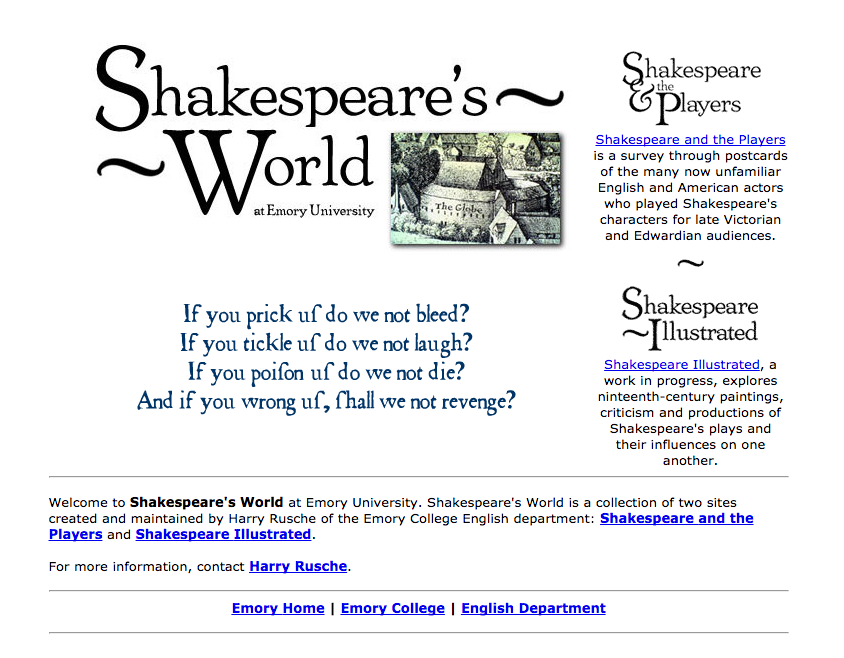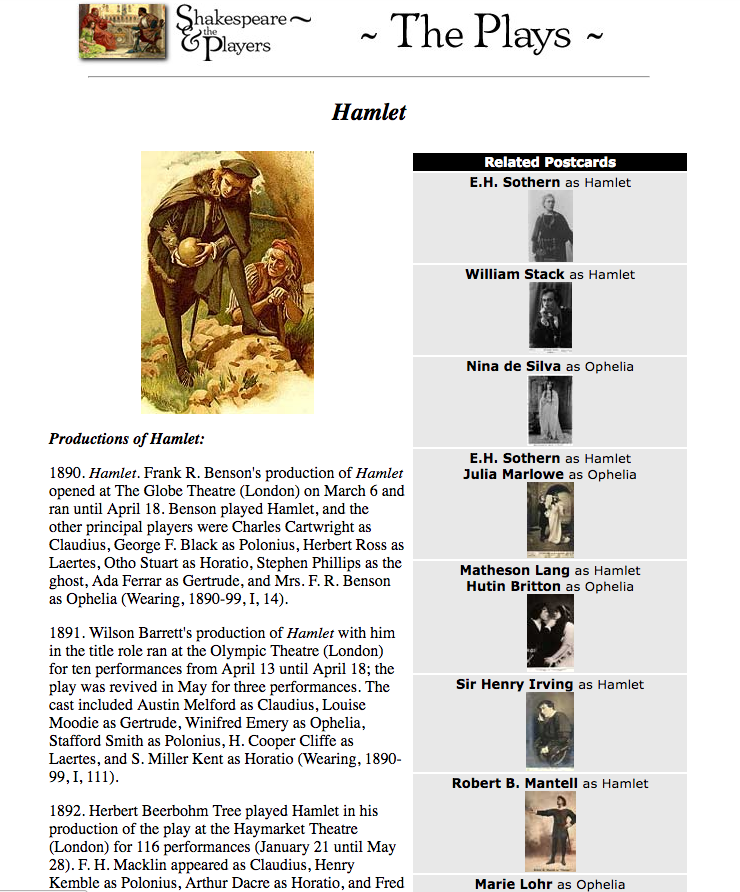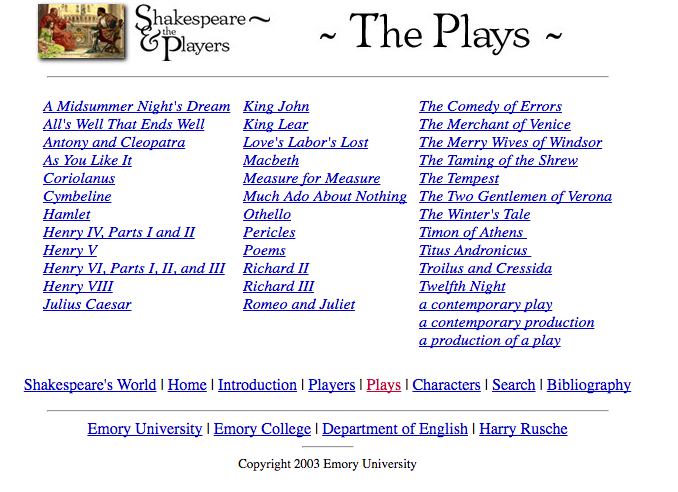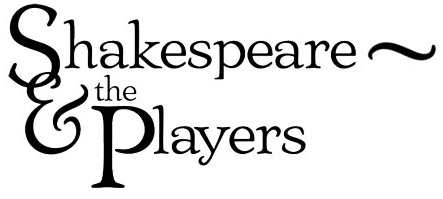“You are now out of your text: but we will draw the curtain and show you the picture.” – Olivia, Twelfth Night (1.5. 520-1)
“Shakespeare & the Players” may look new, but its origins are quite old, dating back to the early days of the web and public digital scholarship.
When Dr. Harry Rusche, English professor and Shakespeare scholar, began the site with the help of a handful of graduate students in the 1990s, he envisioned a practical, simple way of exhibiting his extensive and antique postcard collection to the world beyond his Emory office. For years Rusche had been collecting postcards of actors in Shakespeare productions at the turn of the 20th century. Wanting a scholarly component, he developed a critical apparatus for the collection that stands firmly beside those published in physical books (this appears as the “Preface” on the new site).
With this, Shakespeare & the Players came to life, but Rusche was far from finished. He had begun to teach courses dealing with even more images of Shakespearean performance. This lead him to create another site and pair it with Shakespeare & the Players under the umbrella, Shakespeare’s World.
Like most digital scholarship of the 1990s and early 2000s, the project imitated the print environment to which visitors were accustomed. The pre-Wikipedia site was usefully heavy on text, organized around a table of contents and the traditionally formatted pages expected in a print volume.



By 2015, Shakespeare’s World had been a fully operational online resource for twenty years and managed to continuously attract 375,000 visitors each year – no laughing matter for any type of scholarship. With the changing nature of the web and digital scholarship, the time was ripe for a site revision.
Justin Shaw, graduate student in English at Emory, had loved Shakespeare for years when he first stumbled upon Shakespeare & the Players during a graduate seminar on Disability Studies. In the Spring of 2015 during a Digital Scholarship and Media Studies seminar he jumped into revising the site for a new digital world.
The backstage work that occurs in digital scholarship is fulfilling if not laborious. Learning to work with WordPress and the often conflicting code of plugins and third-party developers was a challenge, but a fruitful one. The most time-consuming aspect of the site redesign involved re-scanning the individual postcards. Transferring the images from the old site was not an option: they were too small for the image-heavy focus of the new site, and they were very pixelated, remnants of limited technology in the past. To enable users to experience the postcards in superb detail, nearly 1,000 postcards were re-scanned (nearly 2,000 image files considering each card has two sides) and a brand new metadata set was added to each to organize the vast collection of new high quality images.
The process took several months, but it allowed ample time to develop acute knowledge about the actors and the cards themselves. Many of the biographies of the players on the site were revised and expanded to include, when relevant, first-hand accounts and personal anecdotes from the players themselves about their own acting. This research allowed doubling the number of titles on the bibliography.
The new ScholarBlogs site almost completely re-imagines Rusche’s original site, and through the homepage squares, offers a new visual introduction to the new “edition” of the site. The current web is organized around images and the ability to interact dynamically with content. Visitors now expect links to other pages, high quality visual content, and a tactilely intuitive interface in lieu of a print-like environment. The new site was especially designed to better enable this interactivity. It works on both mobile and desktop screens to ensure a fully portable and immersive experience whether browsing on a smartphone, tablet, or computer. The larger, clearer images on the new site are an asset to scholarship and general use, whether acting, teaching, or research.
“Shakespeare & the Players” explores new avenues for categorization and interactivity, hoping to ensure a more accessible and dynamic user experience. It is ECDS’ hope that the site will serve to foster more scholarly activity and a general eagerness to engage with Shakespeare as we enter into a new age of insight.
To the right are four postcards images featuring (1) Matheson Lang and Margaret Halstan as Othello and Desdemona in Othello, (2) Beerbohm Tree, Lily Brayton, Oscar Asche, and William Haviland in Richard II, and (3) Harley Granville Barker’s production of A Midsummer Night’s Dream. The fourth image shows Matheson Lang and Nora Kerin in a scene from Romeo and Juliet.
